The 10 Things to Do In Cusco That Are Actually Worth It

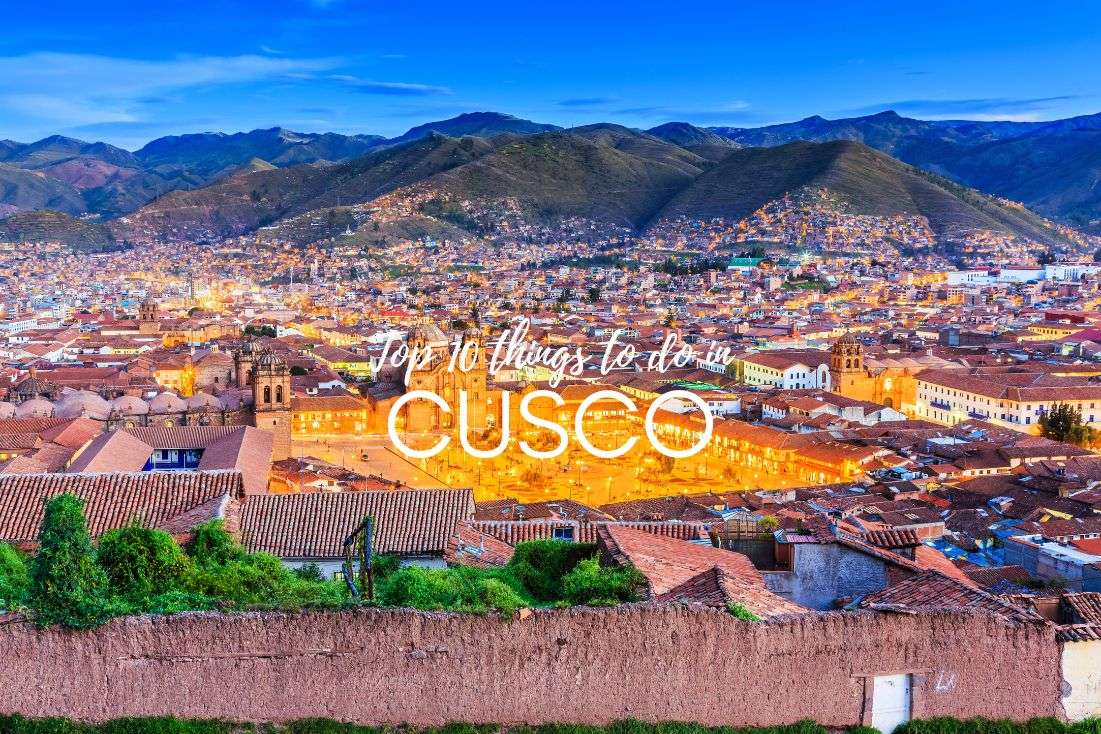
Cusco is one of the very few cities in the Americas that I think are worth spending more than 1 day exploring in. And that’s just within Cusco itself. If you add on time for day trips and the need to acclimatize to the altitude, you’re looking at 4–6 days there easy.
Not only is the scenery amazing—and I mean truly stunning, with magnificent mountains as the backdrop—, but Cusco is set in the perfect location to make it a hub for seeing the surrounding highlights of the highlands. Visiting the lakes, mountain treks, Inca sites and quaint villages can take up a week of your time.
(Just in case you were wondering, Washington DC and Puebla in Mexico are the other cities I think you need more than a day in.)
Cusco basic facts
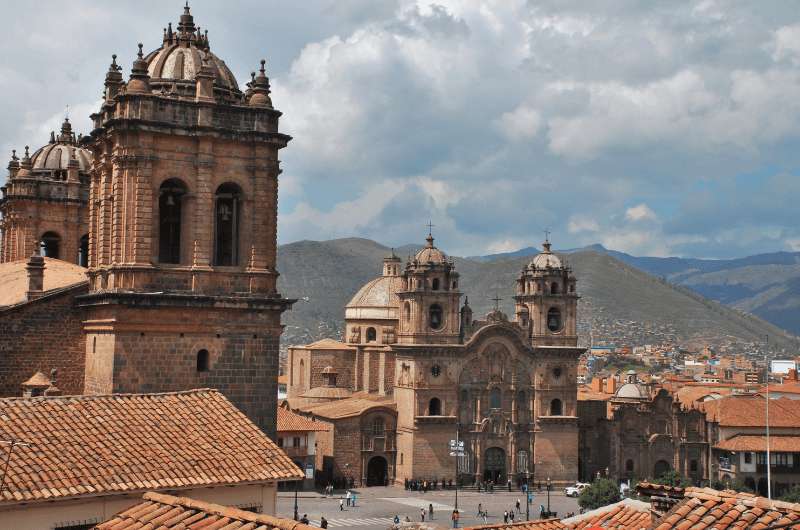
The former capital of the Inca Empire
Cusco is the oldest continuously inhabited city in the Americas. People have been living in Cusco for 3,000 years! It is located in southern Peru near the Urubamba Valley of the Andes Mountains. It has a population of half a million people and is very ready for tourists, which means good infrastructure and fantastic restaurants. A big plus if you ask us!
From the 13th to 16th century, Cusco was the capital of the Inca Empire. That all ended in 1533 when Spaniard Francisco Pizarro took over. Sad for the Incas, but no worries, the Spaniards brought over empanadas and grapes to Peru, too! Pisco, anyone?
Nowadays Cusco keeps much of its Inca heritage front and center, more than any other city in Peru, and you can feel it on every corner. You’ll be emerged in the intriguing culture not only by visiting the fantastic Inca Museum, but just about everything you’ll see during your exploration of the city is somehow Inca-related.
Top things to do in Cusco
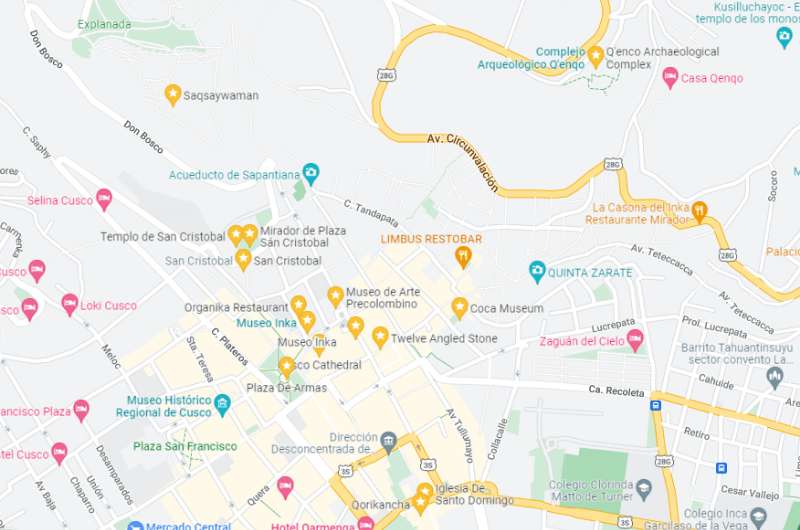
A map showing the location of the best things to do in Cusco—everything is very much in walking distance save for the Inca ruins further to the north
I’d recommend spending one day in the city center and then one more day going through the Inca sites on the outskirts of town.
Here are the top things to do in Cusco listed in the order of how we enjoyed them, from good to great.
1. Coca Museum
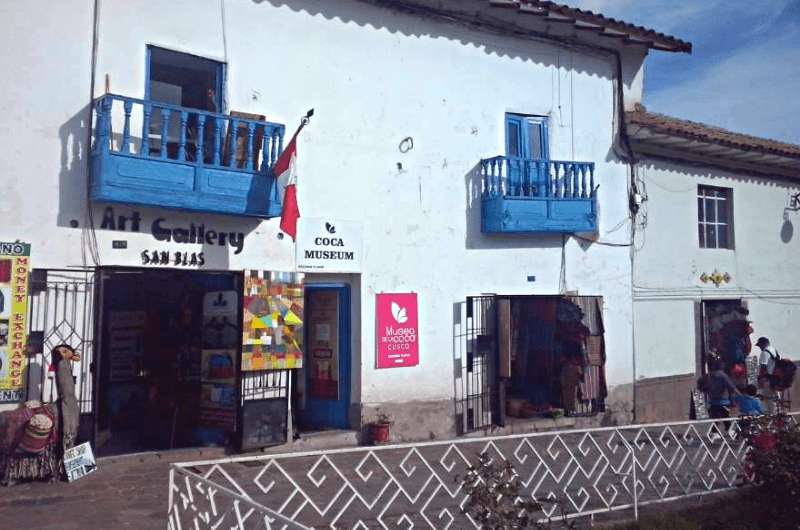
Blink and you’ll miss it
This is a little museum about Peru’s famous plant, coca. You’ll need to be really looking for it in order to notice the entrance in between the tourist shops displaying colorful souvenirs.
You’ll see and most likely try coca in the form of either a tea or a sweet treat while in Cusco. First of all because it feels forbidden and exciting, second of all because it helps with altitude sickness. We’ve written a little more about coca tea in our article about Peruvian foods and drinks.
The Coca Museum does a good job explaining the history and evolution of the coca leaf, including how the Incas used it, its properties and health benefits, like that it’s why the indigenous tribes had nice, white teeth. Of course, you’ll also learn about cocaine, including how to make it, which was a bit strange.
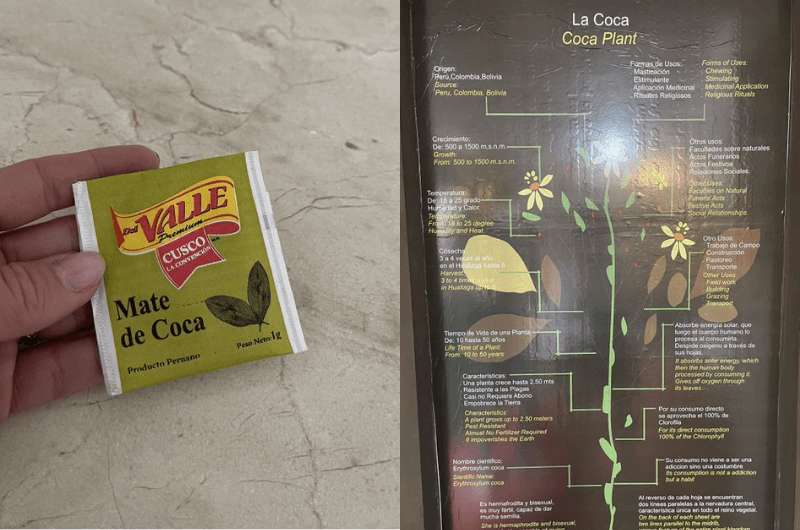
A cup of coca tea, anyone?
Overall an enjoyable experience that ends in the gift shop. Stock up on coca everything! But don’t bring any coca goodies home as gifts, because it is illegal pretty much everywhere on the planet. We bought presents for everyone at home, only to dump them all in Lima because oh, we can’t actually take them out of the country.
Also, know that if you taste anything coca-related, you will test positive for cocaine on drug tests.
- Museo de Coca, Plaza San Blas, Cusco
- Open daily 10 am–6 pm
- Free admission
2. Tambomachay, Qenco, Puka Pukara
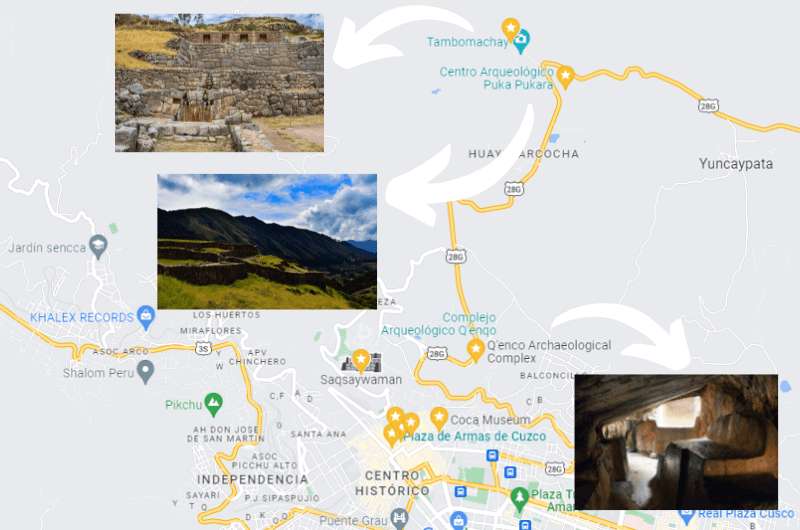
Tambomachay, Qenco and Puka Pukara on a map
I’ve grouped these three together because they’re all relatively close to each other in northern Cusco and you’ll be seeing them one right after the other. Qenco is right in the outskirts of Cusco while Tambomachay and Puka Pukara are a few kilometers outside of town, about 10 minutes by car.
They’re all conveniently on Cusco Tourist Ticket circuit 2 which is only valid for one day, so you have no choice but to group them together during one outing.
Sacsayhuaman is the fourth site that is on this particular ticket, but we’ll talk about that separately. Also, for more information about the Cusco Tourist Ticket, check out our article about Sacred Valley. You’ll need the Cusco Tourist Ticket for that, as well.
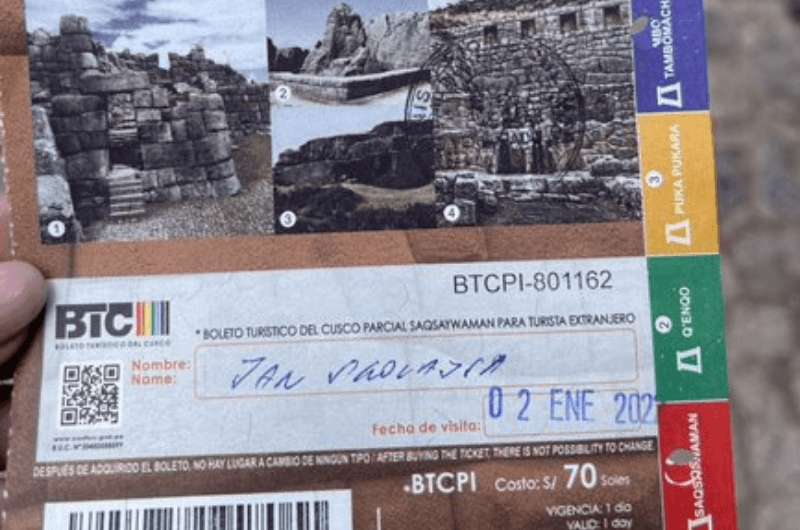
Our Cusco Tourist Ticket
In Qenco, you’ll see great examples of megalithic stone cutting and shaping, one of the Incas’ specialties. This is where sacrifices and mummifications likely took place, and you’ll be able to walk between the high walls and into “caves” to see some alters.
It sounds cooler than it actually was. Not bad, but crowded and not very big, so you’ll be ready to move on shortly. There isn’t much written on the signs, so read up before you go or take a guide. Otherwise you’re just looking at a bunch of rocks.
There are great views of Cusco from Qenco, so that’s a bonus.
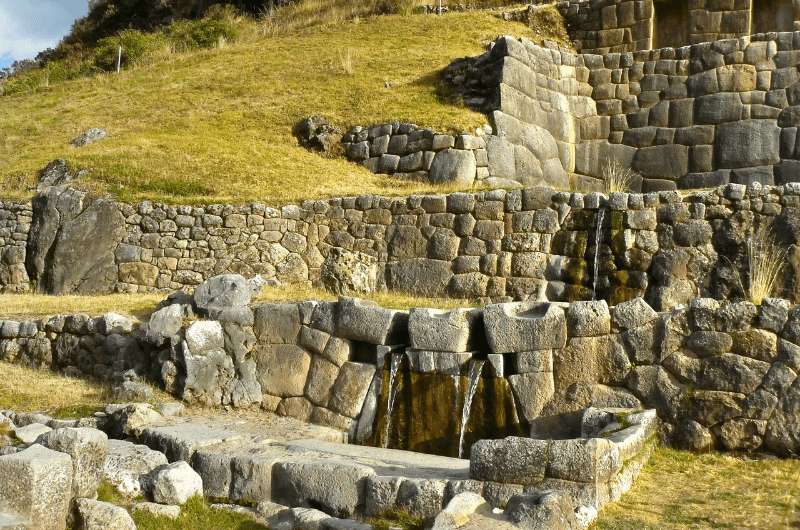
Tambomachay
Tambomachay is a water worship center, or perhaps an Inca spa, who knows. You’ll learn, if you didn’t know this already, that the Incas were great at irrigation in general and controlling the flow of water sometimes over huge distances.
There are three stoned terraces at Tambomachay that are built over natural springs. The water from the springs would feed the canals, aqueducts and waterfalls that were built into the terraces. They still flow today.
One kilometer (0.6 miles) away from Tambomachay is Puka Pukara, the Inca fortress that served as an entry checkpoint into Cusco.
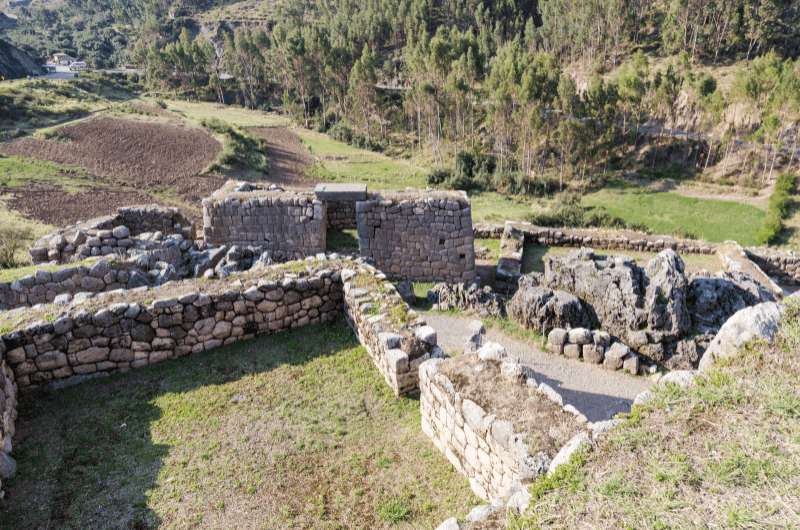
Puka Pukara ruins
At sunset, the walls look red, which is where the name, which means “Red Fortress” in Quechua, comes from.
There isn’t much except the walls left at Puka Pukara, so you won’t need too much time there, either, but the views of the surrounding mountains and valleys are also something to be appreciated.
You won’t find any information at Puka Pukara besides some basics, so again, read up before you go or get a guide. There are horseback tours available for example. Could be an interesting twist on it for those of you not allergic to horses like me.
- Map links: Qenco, Tambomachay, Puka Pukara
- Open daily 7 am–6 pm
- Tickets to each site not sold separately. Cusco Tourist Ticket for these three sites and Sacsayhuaman cost s/70.
Our top tips for Cusco:
- Many of Cusco’s attractions are grouped together in circuits on the Cusco Tourist Ticket. Check out this article to see what circuits include which sites.
- Cusco is a 2-day city. Not something we usually do, but Cusco has so much to do and see!
- Stay at the Hilton Garden Inn Cusco, not just for a fantastic hotel experience, but also because one of Cusco’s best restaurants, the Garden Grille, calls the Hilton home.
- Watch out for the altitude! Cusco is way up high at 3,400 m (11,000 ft), which makes most people experience at least fatigue, if not mountain sickness. We flew in, but if we had a do-over, we’d fly to Arequipa first and leave Cusco for later to give our body a steadier acclimatization.
3. Sacsayhuaman
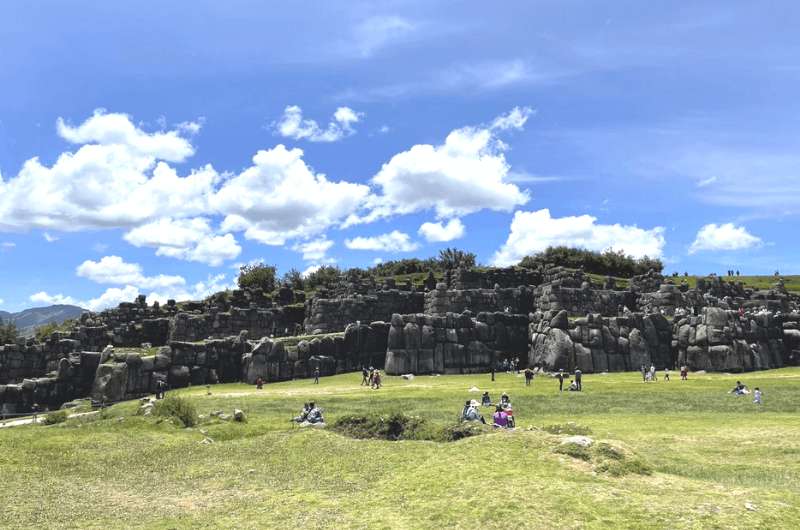
Sacsayhuaman ruins
Sacsayhuaman was a very important fortified Inca complex located on the northern side of Cusco, just a short distance away from the Plaza de Armas. It sits on the top of a steep hill.
The fortress protected Cusco and it is where the Incas‘ last stand took places before the Spaniards took over in Cusco.
The most fabulous part of the site is the central plaza, which is where ceremonies were likely held. It could fit thousands of people at once. The massive stones used in the walls surrounding the plaza are some of the largest used in any site in the Americas.
The Incas were known for their precise cutting and shaping of the individual stones that interlocked so perfectly that no mortar was ever used, but still their buildings would withstand any earthquake.
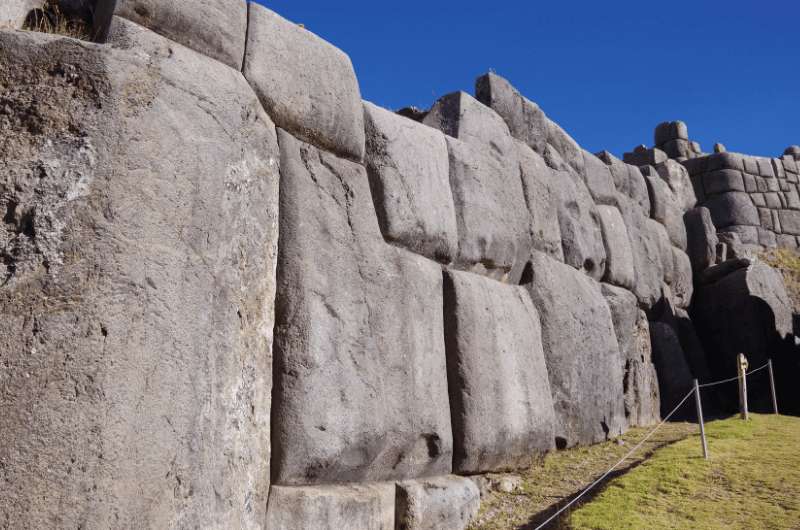
Most of the stones left at Sacsayhuaman are huge as they were the only ones the Spaniards couldn’t relocate to make churches out of them
Another amazing part of this feature is that thousands of men had to gather the stones from a quarry 20 kms away and bring them to the hill above Cusco.
After the Spaniards seized Cusco, they started taking Sacsayhuaman apart stone by stone. Those stones were used to build new structures in Cusco, like churches and governmental buildings. Only the largest stones stayed in Sacsayhuaman, since even the Spaniards couldn’t move them. So again, how in the world did the Incas do it?! These things measure 5 x 2.5 m!
Besides the Inca ruins, you can also catch amazing views of Cusco from Sacsayhuaman, and the sacred mountain Ausangate is visible in the distance, too.
The site of Sacsayhuaman is massive, and again, the views help with the attraction. If you want to see which ruins in Peru we do consider incredible, see our article about the best ruins in Peru.
- Sacsayhuaman on the map
- Open daily 7 am–5:30 pm
- Tickets not sold separately. You need the Cusco Tourist Ticket circuit 1 (s/130) or 2 (s/70). More about how and where to buy tickets in our Sacred Valley article.
4. Inca Rock Street
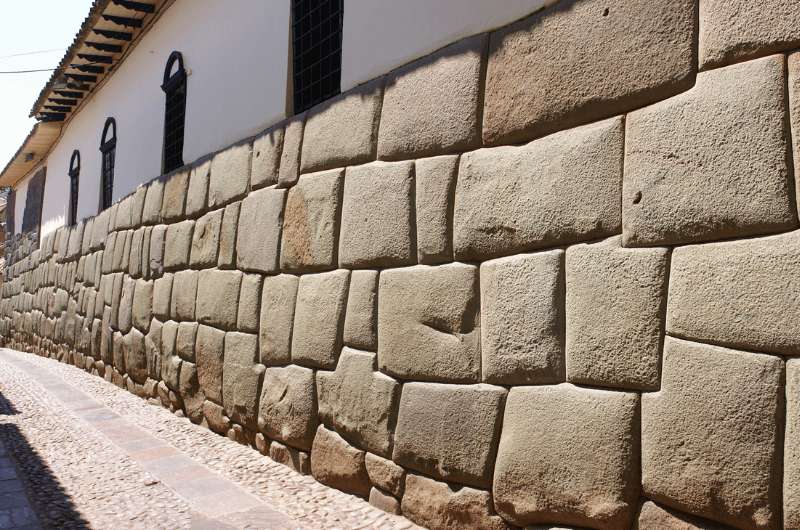
Stone streets
You’ll be trying to wrap your head around the perfectionist Inca architecture and amazing masonry skills on more than one occasion during your trip to Peru. Inca stone walls, built without mortar and standing just because of the ingenious way in which they were lodged together, have withstood the test of time and nature.
Seriously, these things look like they were renovated last year when in fact they’re centuries old! Just compare them to the newer stonework that is half falling apart in some sections. Gotta hand it to the Incas—truly impressive.
Many Spanish buildings were built on Inca stone bases, so you’ll be able to see a lot of Inca stones throughout the city, but in some streets it’s more apparent than others.
Two of those streets are Calle Hatunrumiyoc and Calle Inca Roca, which are one block away from each other. You can walk through and admire the Incas' work.
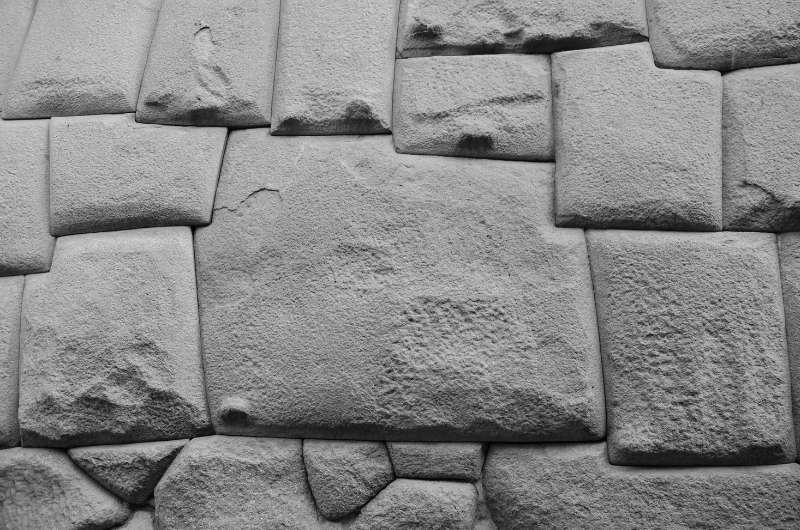
How many angles can you see?
On the first of the streets mentioned, look for the especially popular 12-angled stone, a true pride of the locals. It’s located on the outside of the Archbishop’s Palace. Legend says that it’s the one rock that holds up the entire palace. Remove it and bam! A pile of rocks.
You won’t have any trouble finding it—it’s where everyone is taking selfies and where guides will be offering to tell you about it for a small fee. You might even meet an alpaca that wants to take a picture with you. For a small, of course.
5. San Cristobal Church and viewpoint
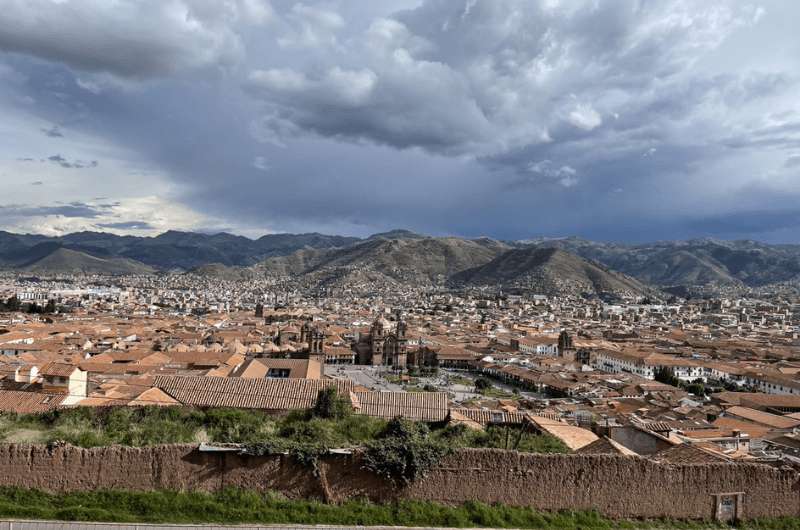
The best viewpoint over the city: San Cristobal
You can just skip the church and come here for the views of Cusco, because it is epic! The red roofs of the city, Plaza de Armas in all its glory, and the mountains bordering it all in the back—it’s these perfect snapshots that make me giddy that I’m traveling like this and actually seeing these views with my own eyes.
The church itself is nice, with a massive golden alter and skylights that give the space a pleasant airiness. You can climb the bell tower, too. Nothing spectacular, which is why I say focus on the views of Cusco instead.
San Cristobal is located on a hill just 500 m (0.3 miles) to the north of Plaza de Armas, right under Sacsayhuaman.
- Plaza San Cristobal, Don Bosco, Cusco
- You can use the ticket from the Cusco Cathedral to get in. It costs s/30 and includes entrance to Cusco Cathedral, San Blas Temple, the Archbishop’s Museum and San Cristobal Church.
Hotel tip: The Casa Cartagena Boutique Hotel & Spa is a dream. It’s located on the way from the Plaza de Armas to the San Cristobal viewpoint. If you click through our booking.com link to make a reservation at any hotel in world, whether we mention it here or not, we get a small commission. You don’t pay anything extra for that, it’s just between us and booking.com. Thank you if you do!
6. Qoricancha
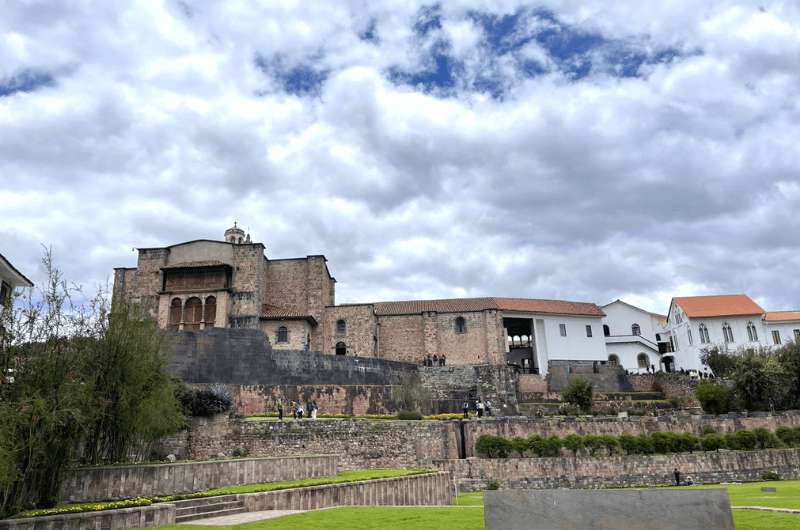
Qorikancha
Qorikancha (Coricancha) was the most important temple in Cusco, making it the most important temple in the Inca Empire. It is just a couple of blocks to the south of Plaza de Armas in central Cusco.
When the Spaniards took over, they took Qorikancha’s Temple of the Sun apart and used the stones for their own little building projects. Most of the stones were used to build the Convent of Santo Domingo, which is the church that sits right on top of Qorikancha’s base. So when you get to Qorikancha, know that the church is the new building and the stone walls on the bottom are the Inca leftovers.
The walls of Qorikancha were once covered in gold, with golden statues all around. The Spanish were fascinated by all the bling, and when they captured the last Inca leader, Atahualpa, in 1533, the Incas paid the ransom for him in gold from Qorikancha.
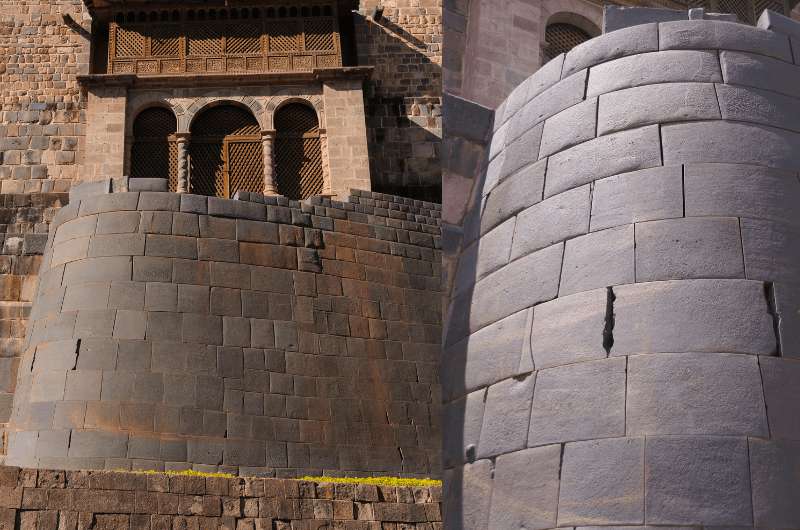
The base is made out of Inca stones
I’ll put another shoutout to Inca stonework here: You’ve already read about how amazingly well-built Inca structures are, allowing them to withstand time and natural events. Well the Spaniards took a whole century to build their cathedral on top of the Inca temple’s base. A few earthquakes later, the church was severely damaged while the Inca base was just sitting there, as perfect as ever, smirking condescendingly at the poor work of the Spaniards.
The Temple of the Sun is only one of many temples that used to stand in the Qorikancha site, but they are all in ruins now. There is a museum attached to the Temple of the Sun with artifacts from Inca history, like textiles, ceramics, paintings and musical instruments.
You’ll need a maximum of 1 hour at Qorikancha.
- Qoricancha on the map
- Open Monday to Saturday 8 am–5 pm, Sundays 2 pm–4 pm
- Qorikancha is not sold separately. It‘s part of Cusco Tourist Ticket circuits 2 and 3 (both cost s/70). You can find out more about the Cusco Tourist Ticket in our Sacred Valley Guide.
Hotel tip: The Palacio del Inka is a Luxury Collection Hotel by Marriott that is located right by Qoricancha.
7. Cusco Cathedral
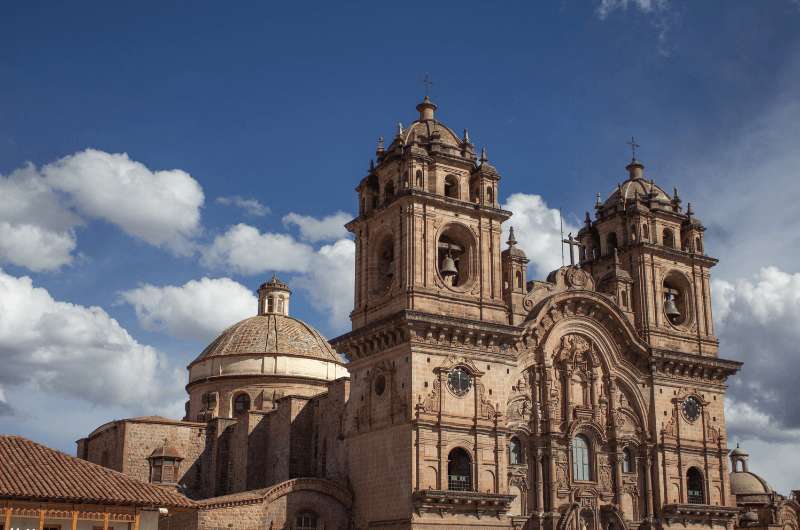
The Cusco Cathedral
The grand Cusco Cathedral took almost 100 years to build and had it not been prohibited, I’d have taken dozens of photos of the interior decorated with gold, silver and cedar wood. All of this is topped with a white ceiling. This cathedral is massive, almost like the one in Sevilla, Spain.
It was finally finished in 1654 after 5 architects worked on the project. Some people spent their whole lives working on a part of the cathedral, and many died in the process, especially while working to bring stone blocks over from Sacsayhuaman.
Like a lot of the buildings in Cusco, the Cathedral Basilica of the Assumption of the Virgin was built on the site of an Inca temple. They used Inca stones from nearby Sacsayhuaman.
As if that wasn’t enough, the Spaniards had Incas work on building their Cathedral, really rubbing in the fact that they’re taking over. The Incas left a few touches of their own, like the jaguar head on the cathedral doors.
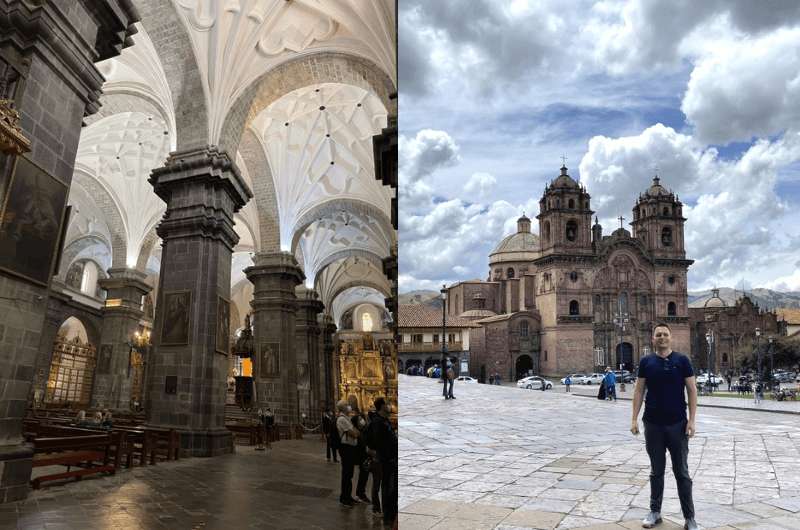
Interior of the Cusco Cathedral
The Cusco Cathedral has three parts: the main cathedral and a chapel on each side, one of which used to be Cusco’s cathedral before the actual Cathedral was built. The Cathedral contains hundreds of paintings, sculptures and artifacts, and the ashes of some of the most prominent bishops of its past. There’s even a silver-covered cedar wood car that is taken out for a spin in the Plaza de Armas every year during religious celebrations.
The most famous painting in the Cathedral is Marcos Zapata’s Last Supper. It’s a very Peruvian take on the event, with Jesus and his disciples chowing down on a guinea pig (or wild chinchilla, depending on who you ask).
Tip: Do they really eat guinea pigs in Peru? More on that and everything else food-related in a separate article.
Put aside an hour to really see everything the Cusco Cathedral has to offer.
- Cusco Cathedral, Plaza de Armas, Cusco
- Open daily 10 am–6 pm
- Tickets cost s/30 and include entrance to Cusco Cathedral, San Blas Temple, the Archbishop’s Museum and San Cristobal Church. Buy in cash at any entrance, take your passport.
8. Plaza de Armas

One of the nicest squares in South America
Cusco’s Plaza de Armas is super pretty, one of the nicest central squares I’ve seen in South America. It is only about half the size of the original Inca square that the Spaniards took over, but it remains a central social hub, and, nowadays, a tourist hub as well.
There are countless cafes, tourist agencies, shops and churches all around the plaza, with a manicured central area full of benches where you can rest your legs after a day of walking. Or, join dozens of others and sit on the Cathedral stairs and take in the atmosphere.
Many of Cusco’s best hotels are steps away from the plaza.
All of the facades of the houses around the plaza are painted white, which contrasts nicely with the red hue of Cusco’s Cathedral that dominates the Plaza de Armas.
There’s also a rule that no building can be higher than 2 stories, preventing any large developer projects from taking over the magic of the place. Perhaps they should’ve had a rule against KFC and Starbucks for the same reason, but alas, it’s too late now.
You can get awesome views of the entire plaza from Mirador de Plaza Sán Cristobal, just a few blocks up from the plaza. You’ll get the same view, but from even higher up, when visiting Sacsayhuaman.
9. Museum of Pre-Columbian Art
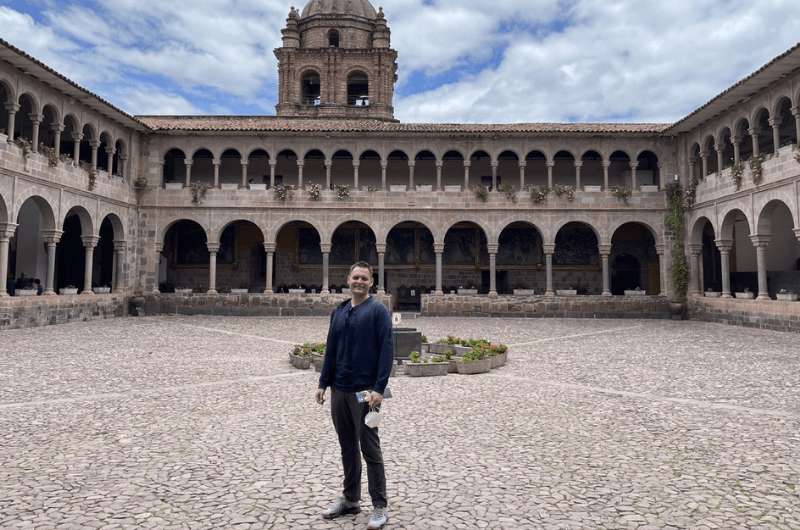
Explore the cultures of Peru at this fantastic museum
Cusco also has some fantastic museums. On our second day in Cusco, we wandered into the Museum of Pre-Columbian Art of Cusco of Peru and it blew us away! It’s part of the Museo Larco group (the Museo Larco that knocked our socks off in Lima).
This museum presents the art and cultures of central Peru from the Mochica civilization to the Incas. It’s a modern museum, I’d say European standards. A pleasure to go through and learn about Peru’s history.
You’ll find out that in the Inca times (1438 to 1533), the culture in Peru was at its absolute high and on the same level as that in Europe in the 12th century. It was a real pinnacle.
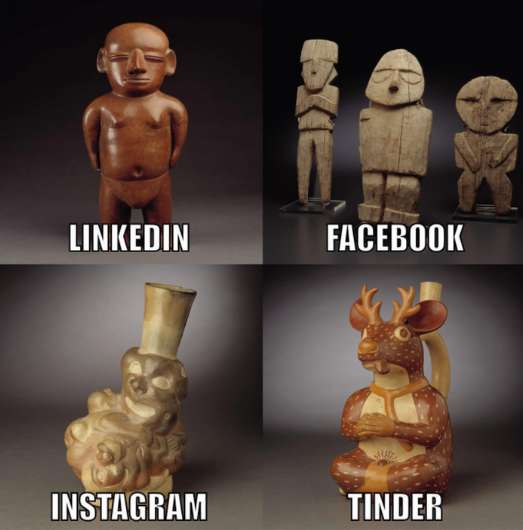
A museum that memes is a museum with a future. Source: MAP Cusco Instagram
The collection is divided into 10 rooms by civilization and by material used (like wood, silver, shell). You can walk around online, too, they have a virtual tour that’ll give you a better idea of what it looks like inside.
If you get hungry, you can dine at the MAP Café and Restaurant, which is basically a glass box in the museum’s courtyard. It which serves (pricey) contemporary Peruvian dishes in a cool setting. Not your typical museum bistro, that’s for sure, but a good option if you don’t care to walk to any of our other favorites (see below).
- Museum of Pre-Columbian Art of Cusco of Peru, Plaza de las Nazarenas 231, Cusco
- Open daily 9 am–4 pm
- Tickets cost s/20
Hotel Tip: Right next to the museum is the five-star Inkaterra La Casona Relais & Chateaux.
10. Inca Museum
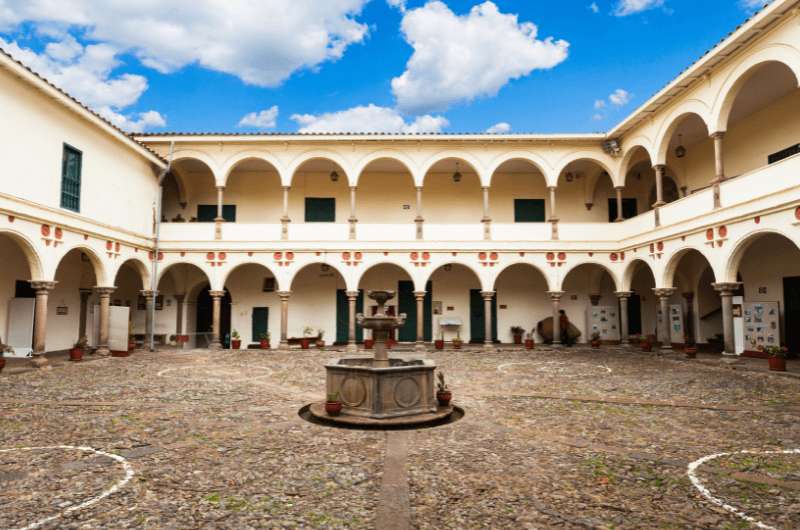
The Inca Museum
The Inca Museum is a large museum where you’ll learn all about the Inca culture, so I recommend going there as soon as you can once you arrive in Cusco. That way, you’ll look at all the Inca sites that await you with educated eyes.
The museum isn’t really up to the standard you’d expect, like the Museum od Pre-Columbian Art is, but it did the job. It has a huge collection of pottery, and there’s an interesting exhibit of jewelry and clothing. Among the classic artifacts you would expect in a museum you’ll also find several largish models of significant Inca sites like Machu Picchu and Moray.
One of the reasons I say it’s not up to standard is that the English signage is hit and miss (more miss the closer to the end you get). So definitely opt for a guide, and hope you get the one we got, because our guide made this museum experience for us. She was fantastic! She spoke great English and actually answered questions, unlike most guides at Machu Picchu for example (I call those “radio guides”—they just recite a memorized text but speak no real English).
Our guide told us about the elongated skulls and high rate of successful brain surgery of the Paracas culture, and that the Wari were amazing at city organization.
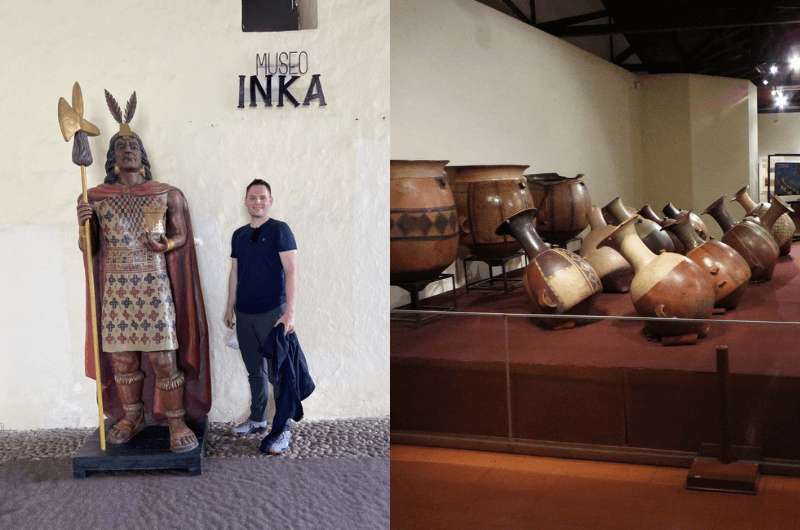
A very un-authentic statue in front of the museum and some very authentic receptacles from inside the museum
But most of all she told us all about Inca culture, their traditions, what they ate, how they dressed and that that Inca dude statue up in from of the museum is not an accurate depiction of the Incas. She explained that when the Spaniards came, the Inca Empire was already in its decline. And that Machu Picchu and Sacsayhuaman were never finished (check out our top ruins in Peru article for other historical sites to visit).
Expect to spend at least 1.5 hours at the Inca Museum.
- Museo Inka, Altaud 154, Cusco
- Open daily 9 am–4 pm
- Tickets cost s/10
Cusco Restaurants
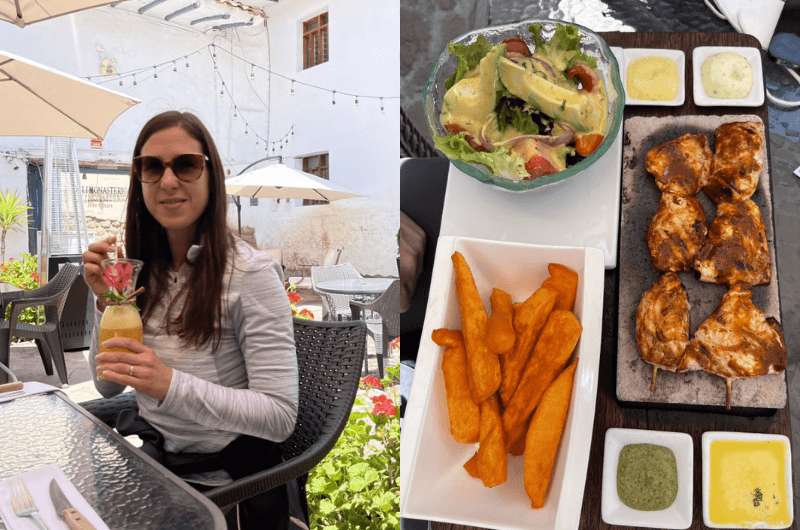
The best kebab at Uchu Peruvian Steakhouse
Cusco is set in the most gorgeous scenery, and it offers so many things to do, but it is touristy enough for there to be a great selection of restaurants, which is always a huge bonus point for us.
Our two favorite Cusco restaurants were:
Uchu Peruvian Steakhouse was a totally random restaurant choice for us. There’s a nice little garden in front with lots of flowers and a few tables which caught our attention. Uchu does the best chicken I’ve ever had. I’m salivating now just thinking about it. I had the peruano kebab and was in love.
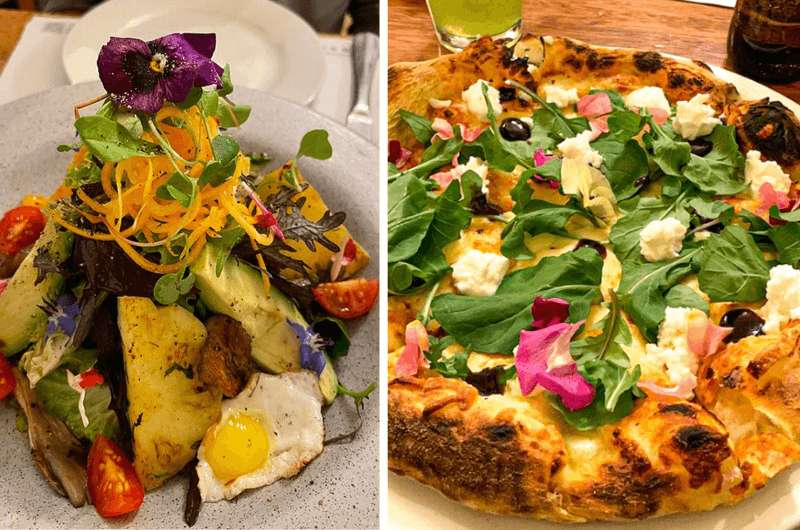
Eat some flowers at Organika
Organika is more a quality-over-quantity-type place. You know everything here is made out of fresh ingredients—they have their own garden in the Sacred Valley! If you want healthy and organic, this is the spot for you. We had an interesting pizza, and I use the word “interesting” because it wasn’t anything like the Italian original. It was…fluffy! We also tasted the arugula tiramisu.
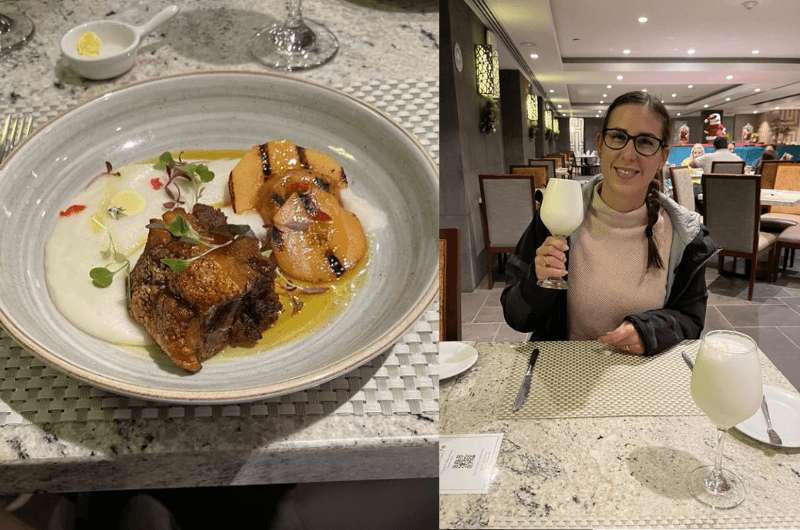
After a long day exploring Cusco, dinner and drinks at the Garden Grille at Hilton Garden Inn Cusco
There are more restaurants in Cosco that we really enjoyed, like the Garden Grille in the Hilton Garden Inn Cusco and the charming Aulita with its contemporary fusion dishes. Read the details about those, plus more of the best restaurants in Peru, in this article.
Tip: We also have an article about what types of Peruvian food and drinks we liked and disliked during our trip, so check that out so you know what you want to try out!
Day trips from Cusco
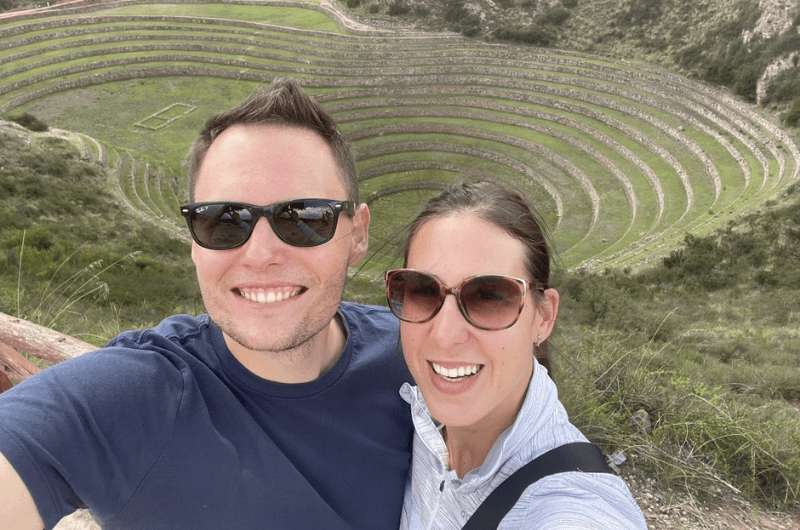
Moray agricultural laboratories
Another great thing about Cusco is that there are many day trips that you can take using it as a base. Head out to Sacred Valley and visit Moray and Maras or Pisac for more Inca ruins and fantastic views. Or strap on your boots and head to Rainbow Mountain or Humantay Lake.
And of course, you’ll probably come to Cusco with the intention of making your way up to the ultimate Inca location: Machu Picchu. Read our Machu Picchu guide for all of the details, because there are a lot of them to consider before you go. It’s not a day trip, because the logistics are just too complicated. We’ve put together a whole article on the best times to visit Machu Picchu, too. It talks about our experience visiting Machu Picchu in the rainy season.
Cusco weather
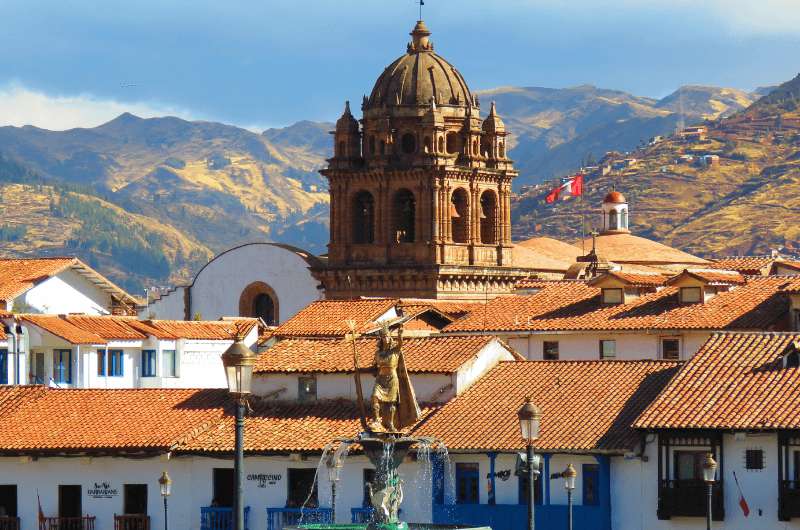
Cusco city
In Peru, the seasons are the other way around compared to the northern hemisphere—summer is December to February and winter is June to August. But since Peru’s so close to the Equator, distinguishing the seasons isn’t as important as knowing when the dry and wet months are.
The temperatures in Cusco are fairly constant year-round at about 20°C (68°F) during the day. From November to March you’re looking at rainy season. But when there’s no rain, in May to August, you get chillier nights, with nighttime temps dropping below freezing.
No matter when you visit, remember that even if you’re not feeling the heat, your skin will be feeling the sun, so use SPF protection. You are, after all, at least a couple kilometers closer to the sun than when you’re at home!
Cusco altitude
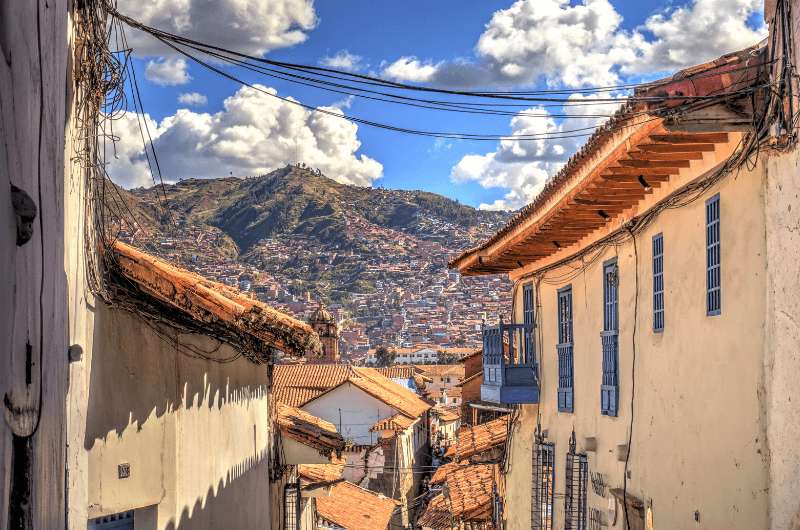
Cusco’s altitude is 3,400 m (11,000 ft)
On the downside of all of Cusco’s natural beauty is the fact that it is in a crazy high altitude, making it hard for us lowland humans to exist there without some side effects. The thinner air definitely makes you feel things you don’t want to be feeling, like fatigue, headaches and nausea.
Cusco’s altitude is 3,400 m (11,000 ft), and that elevation is enough to have you feeling the wrath of mountain sickness. What is surprising to almost everyone when they start researching Peru is that Machu Picchu, which appears in photos to be in the highest of heights, is a full 1,000 m (3,300 ft) lower than Cusco city.
Thanks to the altitude, you’ll want to take the first day of your Cusco visit pretty easy, and if you’re heading up to the mountains, don’t underestimate acclimatization. Two days is not enough for your body to be ready to head to Rainbow Mountain and don’t even look at Ausangate unless you’ve been closer to the clouds for 4–5 days prior.
Is Cusco safe?
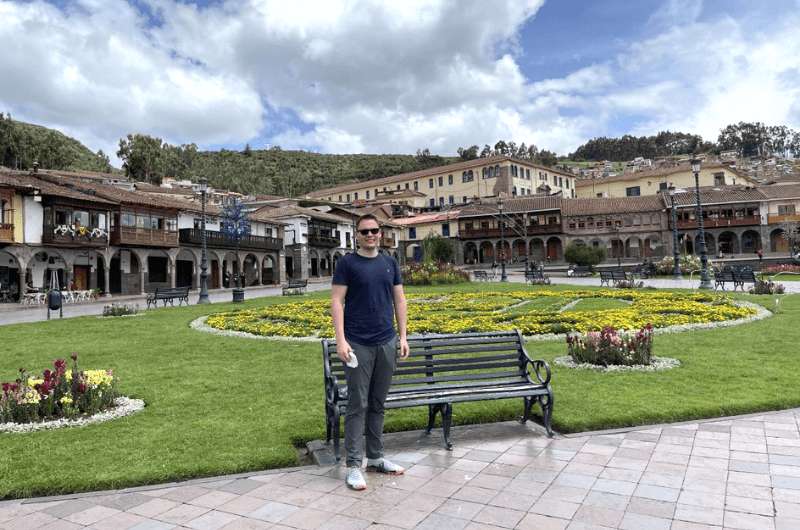
I can say that Cusco is a safe place
My feeling was that yes, Cusco is safe. I don’t usually go wandering about in side alleys at 2 am with a big camera around my neck, so I can’t testify to that, but for the standard tourist stuff, absolutely. Cusco felt safe.
Plaza de Armas especially has a constant police presence with security cameras keeping any bad guy activity at bay 24/7.
The only time I felt a little uneasy during our time in Peru was in the non-central parts of the otherwise fabulous Arequipa, and the most dangerous thing I did in Peru by far was driving in Lima. Maniacs.
This post may contain affiliate links. We earn a small commission if you make bookings through my links, at no additional cost to you. This helps us keep this blog free, thank you!
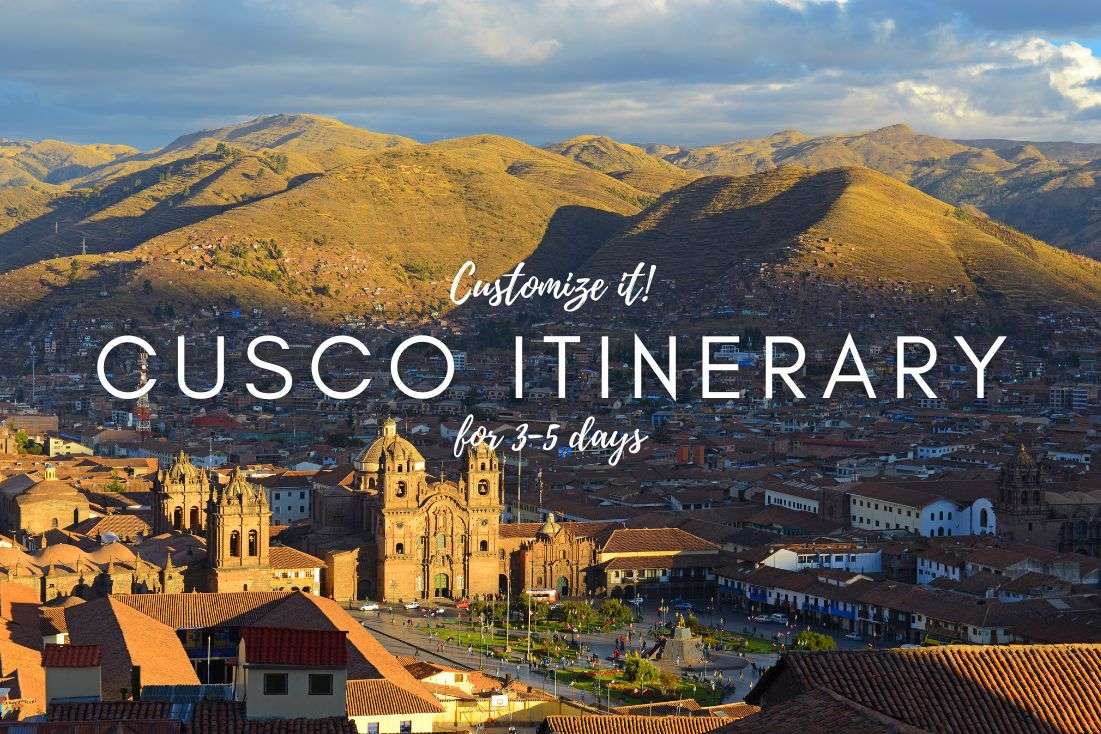
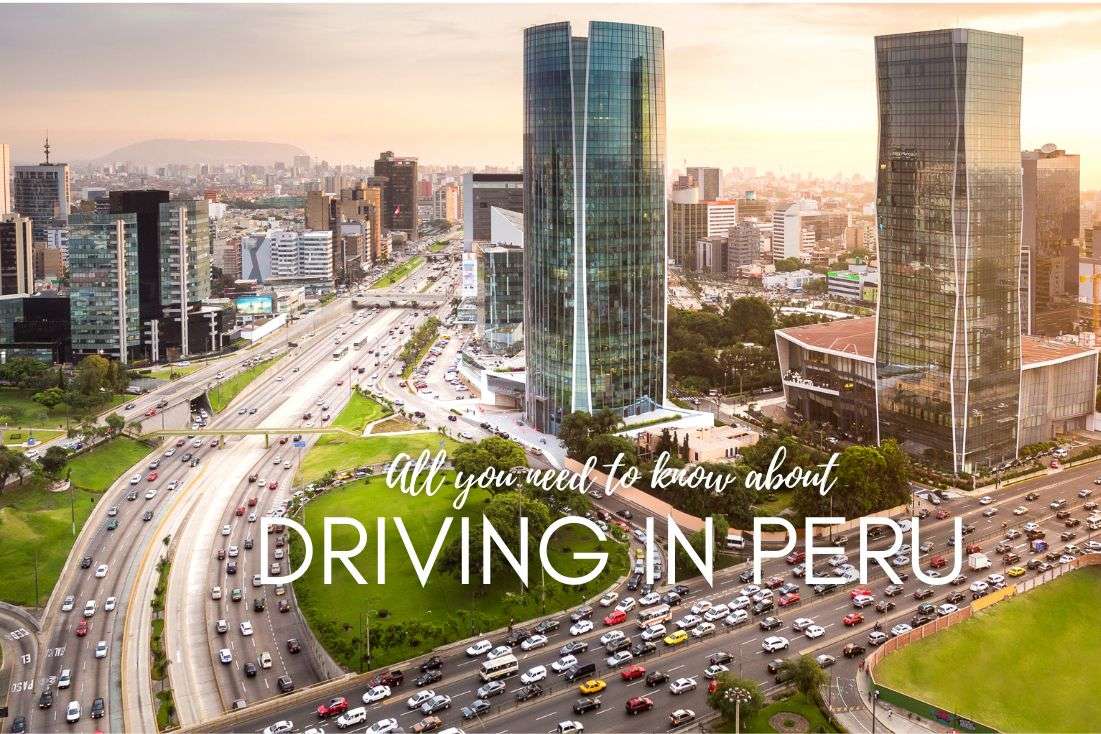
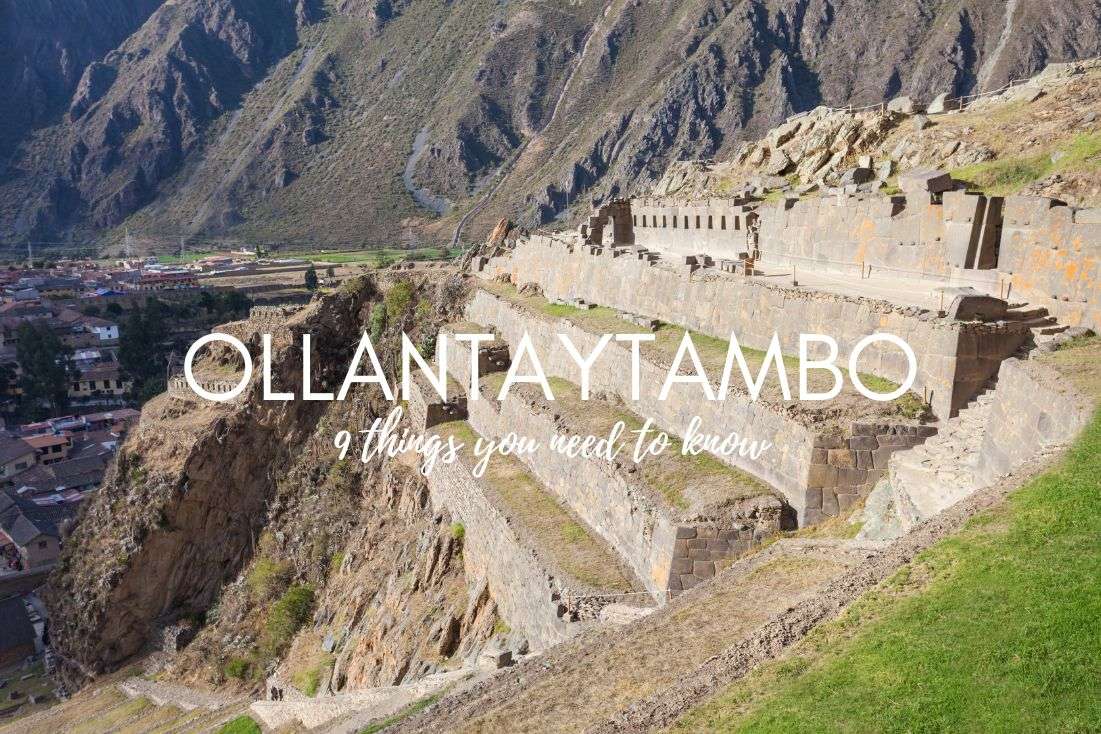




Comments
Thoughts? Give us a shout!